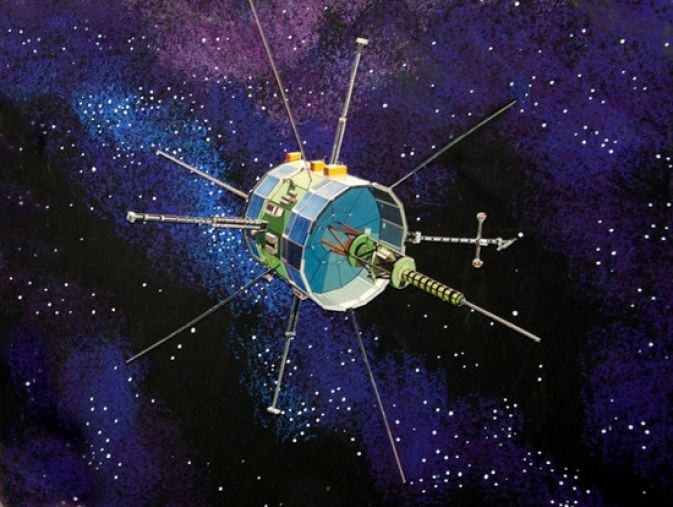ISEE-3 Reboot Project Uses ‘Citizen’ Scientists To Jump-Start Retired NASA Spacecraft

NASA signed an agreement with a group of amateur scientists who for the first time will attempt to capture and reboot a forgotten space probe as it makes a close pass by Earth later this year.
NASA’s 36-year-old International Sun-Earth Explorer 3 spacecraft (ISEE-3) has been aimlessly roving the solar system since the space agency dropped the project in 1997. Now, Virginia-based nonprofit Space College Foundation Inc. will help lead the mission to jump-start the spacecraft, which has enough fuel for one final thrust. NASA announced on Wednesday that it signed the agreement with Skycorp Inc., a Los Gatos, California, company seeking to reduce the costs of making spacecraft and space systems.
ISEE-3 was launched in 1978 to study solar winds coming toward Earth. The craft completed its first mission in 1981 before being redirected to observe two comets. ISEE-3 has continued to orbit the sun since then, and in August, it will make its closest approach to Earth in more than 30 years.
Amateur astronomers in March launched the ISEE-3 Reboot Project through the online crowdfunding platform RocketHub. Within a month, the group said it raised $125,000, enough to develop the software needed to rescue the 1970s-era probe, Space.com reported.
"We have a chance to engage a new generation of citizen scientists through this creative effort to recapture the ISEE-3 spacecraft as it zips by the Earth this summer,” John Grunsfeld, astronaut and associate administrator for the Science Mission Directorate at NASA headquarters in Washington, said.
On Tuesday, the position of ISEE-3 was detected by the huge Arecibo Observatory radio dish in Puerto Rico. Researchers said that they plan to divert the spacecraft’s course by mid-June, but first they’ll have to develop software that will interface with ISEE-3’s outdated technology.
The trick will be figuring out how to use new computers to talk to a probe whose equipment was state-of-the-art 40 years ago but is primitive by current standards.
“The user interface will be similar to the VW Beetle you can buy today,” Keith Cowing, an editor at SpaceRef.com, told Vice website Motherboard. “It might look like the '60s but under the hood it runs a bit differently, but it does the same thing.”
This is the first time NASA has allowed ordinary citizens to use a spacecraft the agency is no longer using or doesn't plan to use again.
The goal is to put ISEE-3 into a stable orbit between the Earth and the sun and to use its instruments to study the solar system.
“Our plan is simple: we intend to contact the ISEE-3 spacecraft, command it to fire its engines and enter an orbit near Earth, and then resume its original mission,” the project leaders said. “If we are successful it may also still be able to chase yet another comet.”
Scientists also said that data collected from ISEE-3 could provide valuable information about the effects of the space environment on scientific equipment. And, if they can pull off the ISEE-3 Reboot Project, it could prove that recycling decommissioned spacecraft is possible.
© Copyright IBTimes 2024. All rights reserved.






















